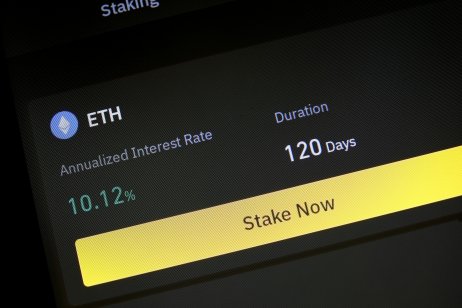Staking Ether: How to generate an ETH return after the Merge

The Ethereum merge, completed on 15 September has opened up new ways of making money through the cryptocurrency via staking, as the blockchain changes fundamentally.
Ethereum’s switch to proof-of-stake has left behind miners and exchanged them for validators. This group is responsible for processing transactions and will earn yield in return.
At the time of writing, there is more than 14 million ETH staked by more than 400,000 validators.
Currently, the annual percentage rate (APR) earned by staking ETH and validating transactions is 4.1%. But there are several methods to access these earnings.
How to become a validator and earn ETH
To earn the APR on their own, investors will need to lock away 32 ETH, worth, as of the morning of 15 September around $50,700. Users will also need a dedicated computer, which must be connected to the internet every day
However, various “staking as a service” options have propped up. Services such as BloxStaking, Kiln and Abyss Finance have simplified the process for users.
Stakers will still need to lock up the minimum of 32 ETH. But there is no need for hardware running all day, with the associated costs.
There are factors investors will need to consider, as the services usually require handing over cryptocurrency keys.
Criteria for stakers to review include whether the service is open source, audited, permissionless, and uses self-custody.
Staking alternatives
Not all staking methods require processing transactions, which means higher APR rates are possible.
Before the move to proof-of-stake, liquidity pools were utilised by investors to earn passive income from their ether.
By lending ETH to these pools, investors could earn yield from a variety of different third parties.
This method is usually more accessible with the amount required as low as 0.01 ETH. However, investors will have to be wary of the risks associated with lending cryptocurrencies to third parties.
Markets in this article


